Road Safety in Delaware: How We Can Reduce the Number of Dead Pedestrians
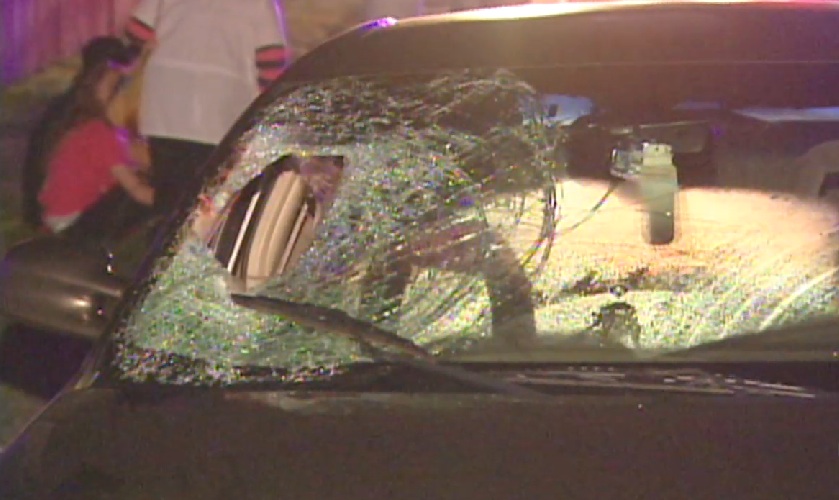
“I’m sorry, Officer! He came out of nowhere!“
“Sorry, mate, I didn’t see you!”
Every cyclist has, at one time or another, had the feeling of being “invisible” to motorists. Bike Delaware has written about this phenomenon – called “inattentional blindness” – which has been extensively studied by psychologists.
But while we have grown to understand why both cyclists and pedestrians can actually be “invisible” to motorists, another and at least equally important question is why our safety has often been “invisible” to traffic engineers.
Traffic engineers pay very close attention indeed to road safety. In fact, for most traffic engineers, road safety (along with congestion) is their job. And yet, despite this focus on safety at the very center of their profession, historically we don’t see many ped/bike safety projects.
Road safety in Delaware (just as everywhere else) is primarily funded through a federal program called the Highway Safety Improvement Program (HSIP). Here are total levels of safety spending for Delaware roads between 2008 and 2013 and the total spending on pedestrian or cycling safety:
Do you see all those zeros for ped/bike safety?
Over 6 years, Delaware spent on average more than $8 million HSIP dollars each year specifically on road safety improvement projects. That’s great. But none of those projects were primarily focused on reducing pedestrian or cyclist fatalities.
Delaware has invested heavily in motor vehicle occupant safety. Perhaps as a result, motor vehicle occupant fatalities are lower than they have been in decades.
Meanwhile, year after year after year after year after year after year, we have spent zero on projects that are specifically about improving pedestrian or cyclist safety. And, coincidentally or not, while motor vehicle occupant fatalities have fallen, pedestrian fatalities have not. There were 30 pedestrian fatalities in 2012. And 26 in 2013. This is actually higher than pedestrian fatalities were 20 years ago! (1994: 18 fatalities; 1995: 29 fatalities; 1996: 20 fatalities; and 1997: 14 fatalities)
Pedestrian and cyclist fatalities now account for over a quarter of all traffic fatalities in Delaware.
What is going on here? Is this a conspiracy by traffic engineers or automobile manufacturers or AAA to drive nonmotorized users off the roads leaving the roads solely to motorists without any distractions from slow-moving pedestrians and cyclists? By, basically, making the roads so hazardous and deadly that all pedestrians and cyclists will be too frightened to walk or bike?
Actually, no. As much as we would all love this to be an episode of “X-files”, there is no sinister government conspiracy going on. The real culprit is more mundane. It’s called “cluster analysis.”
“Cluster analysis” actually seems like common sense. To both engineers AND civilians. (That should probably be a danger sign.) Imagine you have to decide where to make safety improvements. The obvious choice is to ask where are the crashes? and focus your attention and resources there. Most crashes tend to cluster at intersections and so, for decades, engineers have been working to make safety improvements at those intersections.
We now have a lot less motor vehicle – motor vehicle crashes at intersections than we did a few decades ago.
But (and this is the most important fact of this article), motor vehicle – pedestrian crashes don’t cluster.
Let me repeat that: motor vehicle – pedestrian clashes don’t cluster.
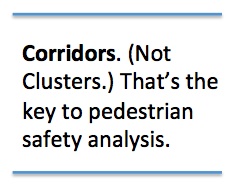 I don’t mean that motor vehicle – pedestrian crashes don’t have a pattern. They do, a very strong one. But that pattern is very different from motor vehicle – motor vehicle crashes. Where the latter cluster at intersections, the former are distributed along a very specific category of roads with names like Kirkwood Highway, Dupont Highway and Concord Pike. Motor vehicle – pedestrian crashes primarily happen in Delaware where pedestrians are trying to cross our multi-lane arterial roads.
I don’t mean that motor vehicle – pedestrian crashes don’t have a pattern. They do, a very strong one. But that pattern is very different from motor vehicle – motor vehicle crashes. Where the latter cluster at intersections, the former are distributed along a very specific category of roads with names like Kirkwood Highway, Dupont Highway and Concord Pike. Motor vehicle – pedestrian crashes primarily happen in Delaware where pedestrians are trying to cross our multi-lane arterial roads.
Now go back to “cluster” analysis and the $8 million + a year we spend every year specifically to improve road safety. All of those projects are going to improve intersections where crash clusters have been identified. What would the effect of those “improvements” on pedestrian safety be?
The answer is nothing. Because that’s not where pedestrians are being killed and injured.
For any engineer who sees road safety exclusively through the lens of cluster analysis (without looking at any other numbers), it’s like no pedestrians or cyclists are being killed in Delaware! And it can seem quite odd – even perhaps insulting – to point out to that engineer – accustomed to thinking in terms of the utility and importance of cluster analysis – that, notwithstanding their efforts, pedestrian fatalities have actually risen in Delaware. For someone who has spent years of their professional career conscientiously trying to improve road safety (using cluster analysis) it can even seem like a rebuke.
It is a rebuke. Cluster analysis has its place. But it’s utterly useless at reducing the number of pedestrians killed on our roads. And engineers have been so focused on (and distracted by) cluster analysis that they have missed the gorilla of pedestrian fatalities standing right in front of them. Like motorists, they have suffered from their own sort of “inattentional blindness.”
But that may be changing in Delaware. Last April, the News Journal reported that DelDOT had formed a new pedestrian / bicycle safety working group. The working group consists of DelDOT, the Office of Highway Safety and the state police, as well as other government agencies. Bike Delaware is also a member of the working group.
Because of the exclusive focus on nonmotorized safety of the new working group, it quickly moved away from the traditional cluster analysis and has instead been focusing on what could be called “corridor” analysis.
So how can Delaware reduce the number of pedestrians killed on its roads? See this report for the first set of recommendations from the Pedestrian/Bicycle Safety Working Group.
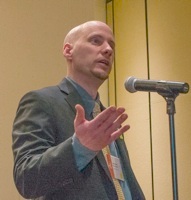
James Wilson, an engineer, is the executive director of Bike Delaware.
RELATED:
• News Journal Front Page: “Pedestrians at high risk”
• Traffic Fatalities Are Declining in Delaware…Except for Pedestrians and Bicyclists

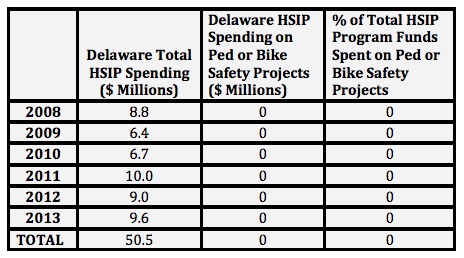

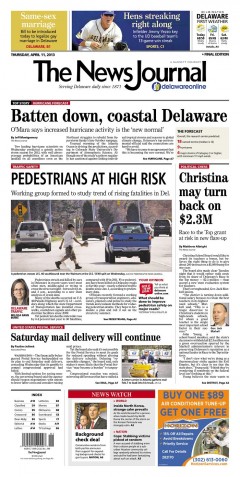





7 Responses
Where infrastructure is concerned, we already know most of what reduces crash rates, while improving bicycle and pedestrian safety; on-street bicycle and pedestrian facilities and traffic calming. Bike Delaware has yet to actively support said facilities, including the pursuit of Complete Streets treatments with Pave & Rehab and enforcement of the bicycle facilities section of the NCC building code. Further evidence of Bike Delaware’s disdain for on-road safety is their continued refusal to support a non-motorized slush pool (aka “funding pools”), which would fund said treatments with or without the need for a repave project.
I am not clear why Bike Delaware cannot adopt the simple philosophy that “every road is for cycling, and every trip has a purpose”. It is this exact reasoning that Budapest Hungry went gangbusters bike-friendly within a few short years. In addition to pathways, we must try and fit existing roads to accommodate bicycles – something that Bike Delaware has been conspicuously absent on.
Great post, very informative. I’m not a cyclist but I am very interested in pedestrian safety in Delaware, as I was hit by a car in Oct. 2012. (I was walking home in Rehoboth Beach, an area that has no crosswalks.) This is the first I’ve read about cluster analysis; I hope DelDOT takes note. Thanks for blogging about this issue!
James,
I believe your article is a little misleading. Below are some clarifications and facts:
1. From your article: “Road safety in Delaware (just as everywhere else) is primarily funded through a federal program called the Highway Safety Improvement Program (HSIP).” This is not entirely true. Many different sources of funding are used to improve road safety in Delaware. Just one example: I spent many years as both a consultant and DelDOT employee working on the planning, design, and implementation of the South Governors Avenue Project in Dover. This 1.5 mile upgrade included the addition of bike lanes, sidewalks, crosswalks, transit stops, and a two-way center-turn lane. This project cost many millions of dollars (not HSIP), years of staff effort, and coordination with hundreds of local residents, businesses, and property owners. The bicycle, pedestrian, and transit safety and operational upgrades were at least as important, if not more so, than the motor vehicle upgrades. Similar projects include the SR 54 Project (completed in 2012) and the SR 26 Project (recently started).
2. You are correct about the cluster analysis, which is one of our longstanding, primary tools for identifying, analyzing, and correcting safety issues. Because motor vehicle mode share vastly outweighs pedestrian and bicycle mode share, motor vehicle crash issues are what are almost exclusively identified through the Hazard Elimination Program, which is a subset of our HSIP and uses the cluster analysis to identify site locations. However, since at least 2005, DelDOT has attempted to incorporate pedestrian improvements into HEP projects whenever possible, and has done so in a high percentage of those projects. For instance, if a left-turn motor vehicle crash problem at a traffic signal was identified through the cluster analysis, we will still consider and implement if possible pedestrian improvements such as new/upgraded crosswalks, curb ramps, and pedestrian countdown signals. For small projects like signal upgrades, these types of pedestrian improvements are often feasible. Bicycle improvements which often involve road widening are not feasible for this scale of project. Sometimes minor transit improvements can be incorporated as well, such as relocated a bus stop to a better location, or including a short piece of sidewalk. We do not get “credit” for these upgrades in the FMIS budget chart that you included.
3. In the late 90s and early 2000s, highway safety experts at the state and federal levels began to recognize that the cluster analysis had flaws, and should not be the only tool used in addressing crash problems and highway safety. This led to the federal requirement for states to adopt Strategic Highway Safety Plans. DelDOT’s first plan was adopted in 2006, and the current plan was adopted in 2010. The plan requires states to analyze many different crash types, compare to national crash rates, and select emphasis areas that either show a high percentage of crashes, or a higher percentage than the national average. Delaware’s plan is available online at: http://www.safety.deldot.gov. It has 7 primary and 4 secondary emphasis areas. One of the emphasis areas is related to intersection safety. This is generally well suited to the cluster analysis. Another is related to run off the road crashes, which comprises 47 percent of fatal crashes in Delaware (2007-2008 data). These crashes are generally not found in clusters and are more susceptible to correction by systematic upgrades: upgrading the types of roads with these crashes, not just specific locations with a high number of crashes. Countermeasures include edge-line rumble strips, delineation of roadside obstacles, etc. Another emphasis area is related to pedestrian safety. We agree this is a major issue for Delaware highway safety, which is why the pedestrian/bike working group was formed. That group is attempting to better coordinate improvements through engineering, education, enforcement, and emergency services. We believe one tool to attempt to address this issue is the use of pedestrian/bicycle safety audits, which you will further explain in your next article. Note that the Kirkwood Highway study is not the first of these conducted in Delaware, but the third. The first two were US 13/US 40 (Wilton Blvd./Llanglon Blvd. to SR 273), and SR 273 (US 13 to Newark). Without giving too much away for your next article, I wanted to note that the US 13/US 40 study, completed in 2009, resulted in several relatively small and one medium size project. Almost all short-term recommendations from that study have now been implemented, including additional warning signs, additional crosswalks/pedestrian signals, and the full lighting of the corridor from Wilton Boulevard to SR 273. The combined cost of the projects was over $1,400,000. HSIP budgets were not used, but a variety of other funding sources were.
4. One final example I would like to present is the implementation of almost 8 miles of bike lanes on US 13 in Dover. These lanes were created by narrowing the travel lanes and striping the bike lanes through a pavement and rehabilitation project. Several pedestrian upgrades were incorporated into this project as well (e.g., crosswalks, pedestrian signals, curb ramps). The bicycle lanes themselves were not cheap, as they required the resetting of the crown of the roadway and adjustment of signal heads at approximately 14 traffic signals. These major operational and safety upgrades for bicycles and pedestrians were funded by DelDOT’s Pavement & Rehabilitation Program. Not HSIP, or other funding sources that are primarily used for bicycle/pedestrian projects such as Transportation Enhancements/Transportation Alternatives, or the statewide trails initiative.
5. This response likely sounds a bit defensive and it probably is. My primary point is that DelDOT has spent a large amount of effort in the last 10 years to better accommodate and improve the safety of all road users, including motorists, pedestrians, bicyclists, and transit users. We do not necessarily do a great job of tallying up the costs or the results of some of those efforts, or publicizing them. Our current programs and projects are certainly not above criticism and we look forward to continuing our working relationship for the good of all road users in Delaware.
Thanks!
Mark Luszcz, P.E., PTOE
Chief Traffic Engineer
Delaware Department of Transportation
Thanks, Mark, for your very informative comments. They are eye opening. And thank you for your efforts. It’s sometimes easy to overlook the really good efforts and projects that have come about in recent years, especially after decades of a car centric focus. When it comes to pedestrians and cyclists, the decades of this focus have left us with miles and miles of neglected roads. Of course we can and should do more. But DelDOT can’t be tasked with the entire solution. Even the best infrastructure solves only a part of the problem because it is only as good as the people who use it. In my area, there are some fine crosswalks and pedestrian signals. I cross on the walk signal, use a flashlight at night, wear bright and reflective clothes, and still, the majority of motorists fail to yield to me. Some don’t even see me. Until motorists, cyclists and pedestrians understand and follow the law, until we start to pay more attention to our responsibilities as road users, until we develop courtesy and the willingness to share the road, not much will change. And that is where education, legislation and enforcement are critical.
Mark, thank you for this clearly written response. I would like to commend DelDOT for the implementation of almost 8 miles of bike lanes on US 13 in Dover. Although expensive, as you point out, these bike lanes will undoubtedly help keep the cyclists who travel that corridor safer, and might even save lives. As a frequent visitor to my daughter’s home in Frederica, I see transportational cyclists out on Rt 13 often. These cyclists are obviously using the bicycle as their only means of transportation (and I can assume this, since I see them out riding in all weather) and they need consideration and safety, now. This improvement was a wonderful example of making safety changes within the existing infrastructure. I hope that we will continue to see such positive changes. Your efforts to that end are greatly appreciated!
From NJ to DE: we also have a high pedestrian fatality rate- 27% of all road fatalities happen to pedestrians in NJ, making NJ the nation’s second worst state for pedestrian road fatalities. NY has the top spot, and it looks like DE is not too far behind. These figures approach TWICE the national average. NJ also has long arterial roads with UN-limited access (as opposed to limited access highways) so that pedestrians enter the roadway from just about anywhere. These arterials are deviated with Jersey barriers (now that’s a surprise)- those concrete waist-high barriers that trap pedestrians who “make a run for it.” The intersections along these arterials are often several miles apart, forcing people to choose between a miles-long walk to get to the other side, or a dangerous crossing. Compounding the problem is that most people cannot judge vehicular speed and therefore, do not even realize the risks they are taking by making these dangerous crossings. When these crossings happen at night, their judgement of vehicular speed is even further impaired. Sadly, this is also an equity issue, as the population mostly affected are those who do not have a car and therefore, must walk to get to work and to run errands.
In New Jersey, we would like to see more focus on ped safety in these environments- not just at intersections. There are a few places along Rt 130 (NJ’s most dangerous road) where ped safety signals and crossings have been implemented. Further analysis as to their effectiveness needs to happen, along with more innovative engineering to create more solutions. Expensive and unused pedestrian bridges are not the answer. NJ’s HSIP spend record is not much better than Delaware’s although the state has kicked off a pedestrian safety project. NJ also saw a 160% increase in HSIP funding in 2013, the highest increase of any state in the nation.
Cyndi Steiner
Executive Director
New Jersey Bike & Walk Coalition
We have some ideas to share on this topic. Look through our products: http://www.xwalk.com and reach out if you have any questions. We know our pedestrian safety solutions help – ask us anything about them!